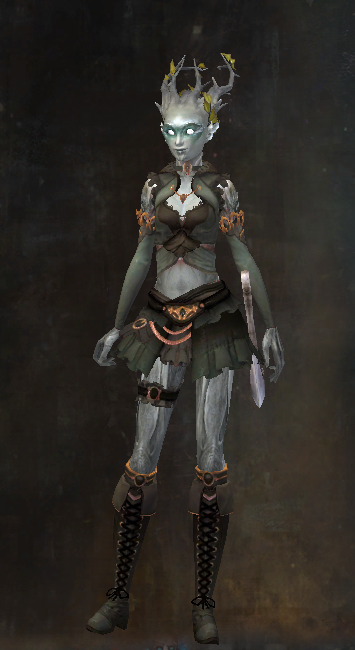“Video games have increasingly being deliberated as a propaganda tool to influence people with regards to some targeted matters. Design of game’s character plays an important role for such objectives”.
Creating my own avatar within the Guild War 2 world had been a thrilling experience, mostly because I had the freedom to construct something from scratch, ranging from race, body and facial features to my external outfit. Throughout the process, I knew that I wanted to create something that can best represent myself, that way I can feel a sense of connection with the character I created throughout the game.
Not only I wanted my avatar to be a representation of my own self in the game, I also wanted it to be something that is magical and imaginary. Thus, when choosing the race of the avatar, I was certain that I wanted to be a Sylvari instead of Human. Sylvari was described to be a “noble being” with the characteristics to be adventurous, curious, eager, and chivalrous, which were qualities that I tend to lack in real life but wishes to have. Similarly, I was excited to choose my profession as a “Necromancer” that “summons the dead” as this allows my avatar to deviate away from being realistic and common. The idea that I can become something so special and charming was intriguing.
Hence, I was disappointed when the selection of gender was limited to only male and female, in which the subsequent body features were consistent with the gender-binary traits as well. The body and facial features of a male avatar are marked with traits that are more masculine and had an emphasis on physical strength and power. On the other hand, female avatars were bounded with feminine characteristics, such as slim body features and dressing in skirts and tights. These predetermined assumptions and settings pulled the players from creating something special and magical back to something that is in coherence with the gender norms the real world perpetuates.
The more I get to customize my own avatar, the more I discovered that my avatar isn’t just a representation of myself. As I found out that a lot of the qualities my avatar has is something that I lack in real life, I became aware that I am actively creating something that I desire to be.
This linked back to the study “ Playing With Ourselves: Multiplicity and Identity in Online Gaming.” Jennifer Jenson, Nicholas Taylor, Suzanne de Castell and Narry Dilouya had emphasized that most avatars player created are the creation of their own’ “idealized version of the self” (p. 863).
My avatar too was beyond the representation of me, but a reflecting image of who I desired to be. For instance, many of the qualities that my avatar has a heavy emphasis on being noble, curious, adventurous, and acting with wisdom. The idea that I could be someone that is beyond my human self is intriguing, and it makes me feel empowered as I am creating something that is beyond myself in real life.
To conclude, Loman’s quote his work “Avatar warrior: A Kansei analysis” holds through because gaming makes our desired qualities more appealing. Through the creation of the avatar, we were given the chance to overcome the shortcomings we have in real life and allows ourselves to move closer to all the idealized traits that we desire. Ironically, in reality, these underlying desired traits are often the ideologies we continue to perpetuate and reproduced today.

Reference:
Jenson, Jennifer, Nicholas Taylor, Suzanne de Castell & Barry Dilouya (2015) Playing With Our Selves, Feminist Media Studies, 15:5, 860-879.
M. Lokman, A. M. Mustafa, M. F. Mohd Fathir and A. R. Abd Rahman, “Avatar warrior: A Kansei analysis,” 2014 3rd International Conference on User Science and Engineering (i-USEr), Shah Alam, 2014, pp. 24-29.